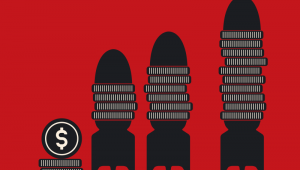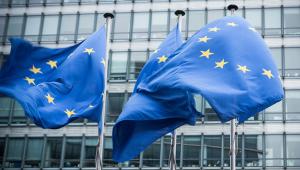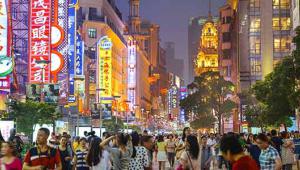
Infrastructure investment on a massive scale is the policy tool of choice for governments vowing to ‘build back better’ from the ravages of the Covid-19 pandemic.
In the US, president Joe Biden has pledged the largest infrastructure programme in a century, putting the climate crisis at the heart of a plan to make the economy “more sustainable, resilient and just”.
Central to Biden’s commitment is a two-step infrastructure programme – a sweeping $1trn bipartisan bill to revitalise the country’s crumbling infrastructure, followed by a potentially even more significant budget reconciliation package, focusing on social programmes and climate policy.
The infrastructure bill promises historic investment to modernise roads, bridges, water systems and the electricity grid, making them more energy efficient and resistant to extreme weather.
Meanwhile, the G7 has announced a plan to mobilise hundreds of billions of dollars in infrastructure investment for low- and middle-income countries.
The Build Back Better World (B3W) partnership is described by the White House as “values-driven, high-standard, and transparent”, and is led by major democracies to help meet the need for over $40trn of infrastructure investment in the developing world.
At its core sits the mobilisation of private capital to invest in global infrastructure, with a focus on four areas: climate, health and health security, digital technology and gender equity and equality.
Designed as an alternative to China’s Belt and Road overseas investment programme, B3W will prioritise the environment and climate, labour and social safeguards and transparency in its investments.
The political momentum behind these initiatives should not be underestimated, according to Matthew Goodman, former White House official and senior vice-president for economics at the Center for Strategic & International Studies in Washington.
“Climate change structurally is one of the top two or three priorities of the US administration, so it is embedded in everything it does,” he says.
“There are a lot of times when governments are reactive or do not step in where they should or make empty promises… but this strikes me as a serious effort, which is significant in its intention.”
Seductive policy
Infrastructure investment is undoubtedly a seductive policy tool for governments – providing a short-term jobs boost while stimulating economic activity in the longer term, Goodman says. Although some projects were happening anyway, Covid-19 has provided them with “real impetus” and has accelerated their progress.
In the UK, too, infrastructure investment is one of the three pillars of prime minister Boris Johnson’s plan to ‘build back better’, forming the basis for an economic recovery that he claims will unite and level up the country.
In addition, the government’s 10-point plan for a green industrial revolution promises to turn the UK into the world’s number-one centre for green technology and finance, laying the foundations for decades of economic growth by delivering net-zero emissions while also creating jobs.
“We long ago proved that green and growth can go hand in hand… so let us meet the most enduring threat to our planet with one of the most innovative and ambitious programmes of job creation we have known,” Johnson said at the launch of the plan.
But analysis of the post-Covid-19 recovery packages announced by governments around the world suggests that the funding boost for sustainable measures could be undermined by spending that entrenches dirty practices.
According to the latest update of the OECD Green Recovery Database – developed to track pandemic recovery initiatives across 44 countries – $677bn has been allocated to environmentally positive measures.
However, nearly half that amount has been spent on programmes likely to have mixed or negative environmental effects.
Fossil fuel subsidies
In addition, numbers collated by the OECD show that nations’ spending on fossil fuel subsidies in the years 2019 and 2020 alone more than outstripped the amount allocated to green recovery.
“It is a sign that what is being done with one hand is potentially being undone with the other,” says Andrew Prag, a senior adviser in the OECD’s Environment Directorate.
“The as yet uncategorised remainder [of recovery spending] is unlikely to be completely benign for the environment, so it is an indication that there is still a strong tendency to invest in ‘business as usual’ activities.
That is not the radical transformation you would need to start seeing to achieve the net-zero targets that countries have signed up to,” Prag adds.
A breakdown of planned spending on physical infrastructure by the Global Recovery Observatory paints a similar picture: of the $1.7trn announced to date by the world’s leading 50 economies, $570bn is ‘clean’, $72bn is ‘dirty’ and the rest is neutral.
To be classified as ‘clean’, investment must have a net positive impact on greenhouse gas emissions, climate resilience, air pollution or biodiversity.
“A period of recession enables rebirth – this is the greatest opportunity you have to reshape the future of your economy,” says Brian O’Callaghan, lead researcher and project manager of the Oxford University Economic Recovery Project, one of the bodies behind the Global Recovery Observatory.
“A period of recession enables rebirth - this is the greatest opportunity you have to reshape the future of your economy”
Alongside the opportunity to use physical infrastructure to create a more sustainable future, there is also a risk of ingraining ‘dirty’ policies, he says – a prime example being the planned expansion of coal-fired power plants in parts of the developing world.
These, O’Callaghan believes, are likely to become stranded assets in the future as renewables become a cheaper alternative to fossil fuel.
“That is not only a risk of financial loss, particularly in India and China, where these assets might be owned by the government – there are also social risks,” says O’Callaghan.
“A lot of Europe is trying to figure out how to deal with displaced or negatively affected populations who worked at a coal generating facility, for example. China is creating entire new populations that will go through the same transition in the decades ahead.”
Failed rhetoric
Meanwhile, some major environmental initiatives have failed to live up to government rhetoric.
A report from the Oxford University Economic Recovery Project has been critical of the UK’s green homes grant scheme, for example, which it warns may do little more than shift demand in the short-term, with “unclear” effects on emissions, job creation and economic stimulus.
“The UK is very firmly in our ‘missing opportunities’ box, while current leaders like Denmark, Germany, Norway and Finland are far higher in terms of their green spending,” says O’Callaghan.
“The UK government might say it is ‘building back better’ and ‘building back greener’, but that is not necessarily what the data suggests.”
Alongside scrutinising government spending announcements for examples of normal spending being dressed up as being Covid-19-related and old spending packages presented as new, analysts have also had to consider the immediate harmful impacts of delivering green infrastructure – such as the steel used to build a wind turbine.
“Almost all infrastructure investment has a very negative short-term climate impact,” says O’Callaghan.
“However, the long-term effect can be very positive, particularly when it displaces dirtier modes of social function.”
Local authorities in the developed world have a crucial role in building the cities of the future –making better use of existing building stock to become healthier, more pleasant and more sustainable places to live, according to Jack Barrie, research fellow at the Chatham House think-tank.
That, he says, will allow poorer nations building infrastructure from scratch to avoid the mistakes of developed nations and to design intelligent urban spaces with integrated transport and green spaces.
Breathing space
“A new Paris is being built every five days around the world – a staggering amount of urban infrastructure,” Barrie says.
“Rich countries need to switch from consuming so much… to give the breathing space for developing countries to build the essential infrastructure they need to lift out of poverty and be prosperous.”
The cities of the future will be characterised not by the energy-intensive urban sprawl of the past but a new model, based on intermodal public transport, active travel and creative re-use of vacant office space in city centres.
“It is about thinking really smartly around how we use existing building stock rather than just falling into the trap of building more new stuff,” says Barrie.
City councils need large amounts of capital upfront to invest in changes to deliver savings further down the line via a healthier and more mobile population and lower maintenance costs.
Balancing the desire to encourage a fast escape from the economic harm of Covid-19 with longer-term environmental goals is far from easy.
“It is about giving [authorities] not just the fiscal resources to invest in green infrastructure but also the democratic mechanisms and space and time to do it properly with the population,” Barrie says.
“If it is done badly, it locks us into the next half century - and it is too easy to do the wrong thing.”













